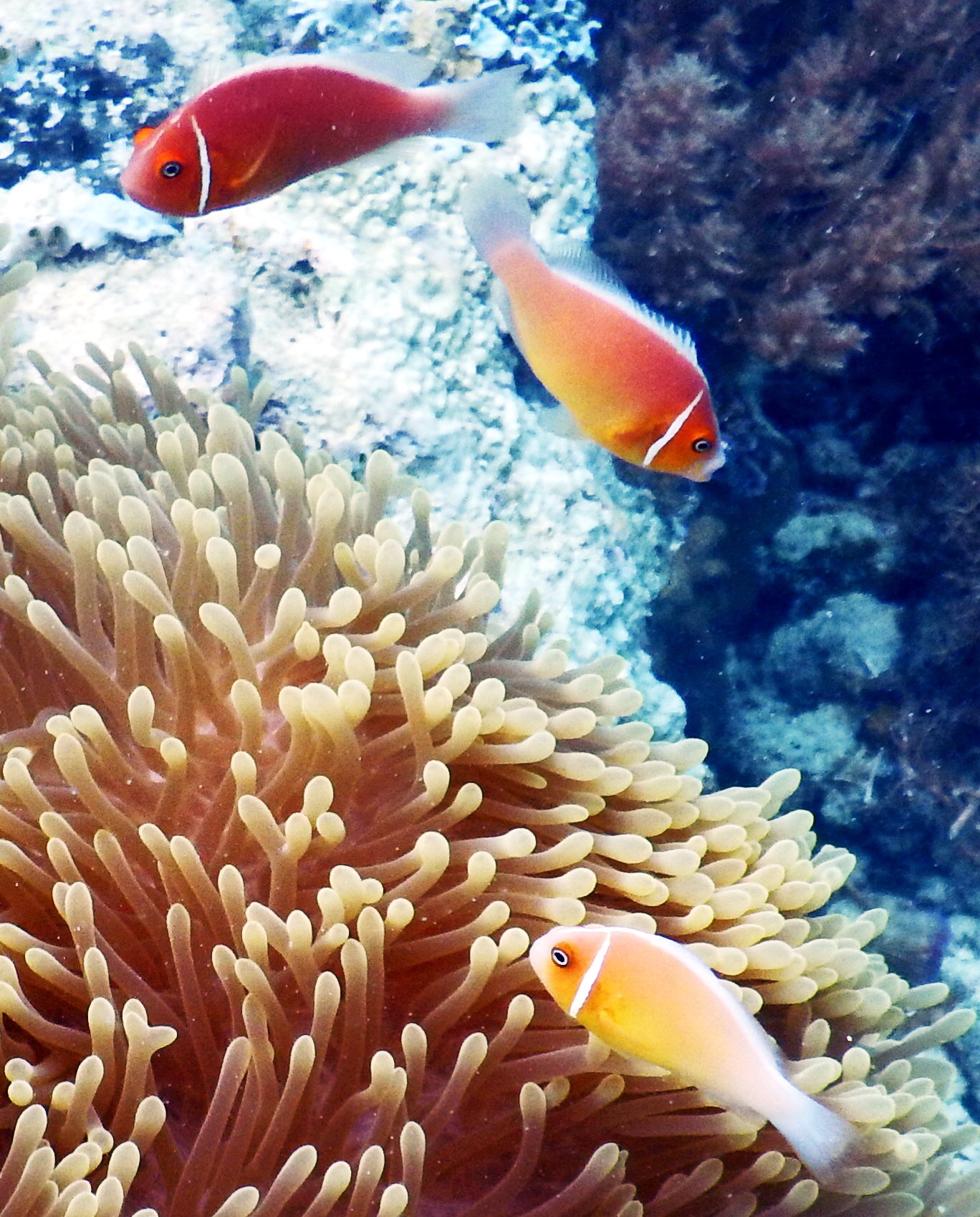Published in the Ocean Watch column, Honolulu Star-Advertiser © Susan Scott
March 23, 2019
When I was snorkeling with masses of anemones in the Indian Ocean last month, my friends were calling all species of anemonefish that we saw clownfish. I explained that only the orange-and-white Nemo is a clownfish. The other are anemonefish with various common names such as pink anemonefish, Clark’s anemonefish and so on.
Now that I’m home, I’ve discovered that either I learned the above name thing incorrectly decades ago, or the 2003 movie “Finding Nemo” caused a sea change in the common names of these fish.
 The color variation of these clownfish, aka pink anemonefish,
The color variation of these clownfish, aka pink anemonefish,
may be related to their place in the group, the top two being the
dominant pair, the lower pale male living in hope.
©2019 Susan Scott
Websites including the Monterrey Bay Aquarium, Wikipedia, Merriam-Webster and countless others say that clownfish is another name for anemonefish. And although textbook authors use mostly Latin names, my most recent fish text, published in 2013, writes, “The popular clown, or anemonefishes (Amphiprion spp., Pomacentridae), live in small groups.”
OK, then. Clownfish it is.
While reading up on clownfish, I discovered that I was wrong about another fact I’d spouted in Zanzibar. Besides telling my companions that they were calling anemonefish the incorrect name, I also told them that all anemonefish are born female, and should the need arise, one turns into a male.
Oops. That’s the case for wrasses and parrotfish, but backward for clownfish. All clownfish are born male with only a select few becoming females.
Usually, clownfish group themselves near a large anemone where its stinging tentacles protect the little fish from predators. (The fish have a mucus coating on their skin that makes them immune to the stinging cells.)
The anemone tolerates the fish visitors because it gets to sting and eat predators that the clownfish attract. Clownfish huddling also helps clean anemone tentacles of debris that gets stuck there. And so the alliance is win-win for the fish and the invertebrate.
Clownfish live in groups of one sexually mature male-female couple and several immature males, all unrelated. The female is the larger of the pair, her mate a tad smaller. These two are the only ones in a group that spawn and produce offspring.
Although the smaller males hanging around may be as old or older than the mated pair, the dominance of the mature couple keeps the smaller males from growing up. Low-ranking males, therefore, are as good as castrated.
If the female dies, however, her male partner turns into a female, and the largest of the little guys moves up, matures and becomes the new big dad.
At least 58 fish families have members that undergo some kind of sex reversal in their lifetimes, and they do it in every variation imaginable. My text book authors write, “When the going gets tough, the tough change sex.” Names, too, apparently.
Clownfish are the champions.